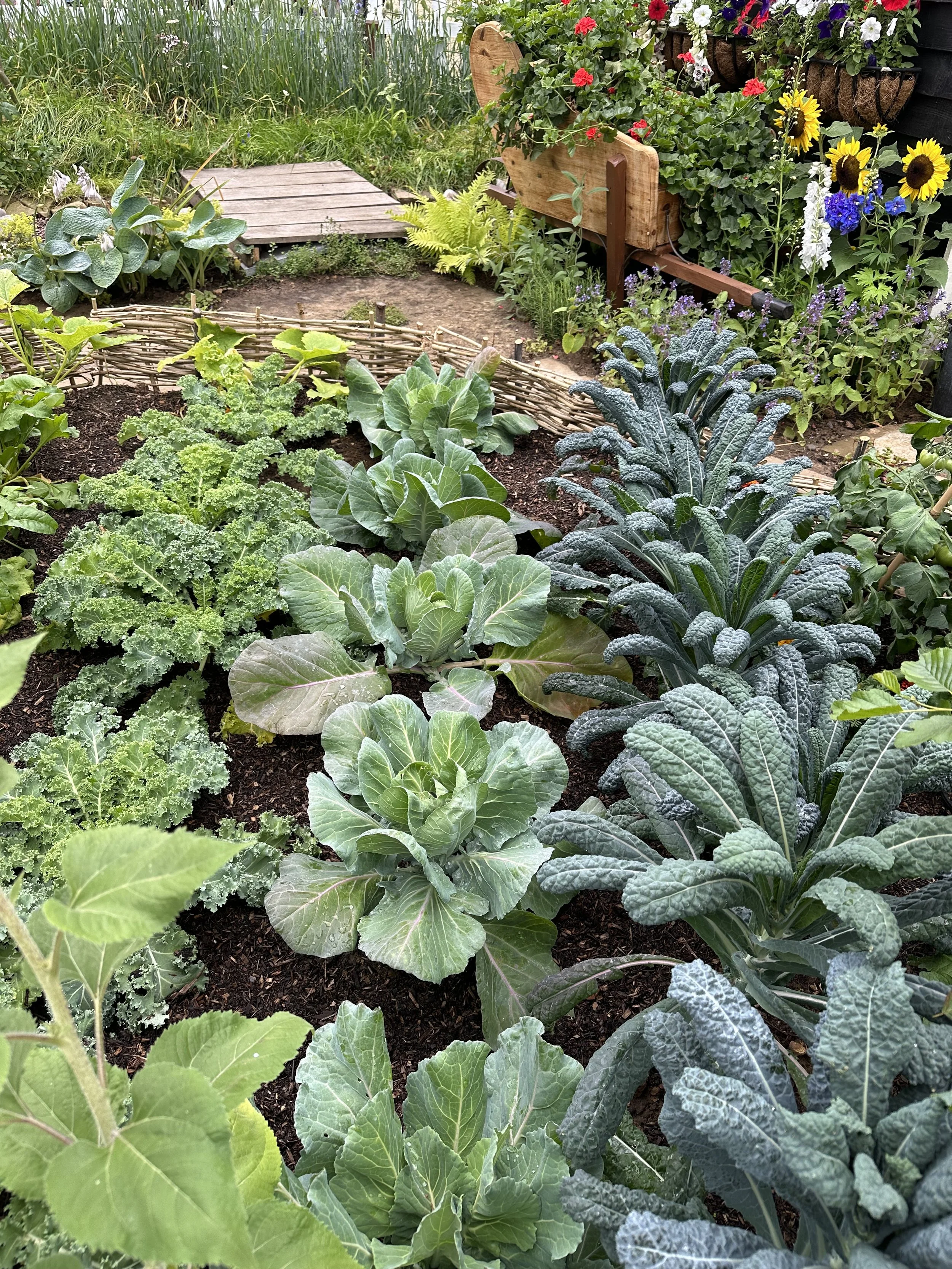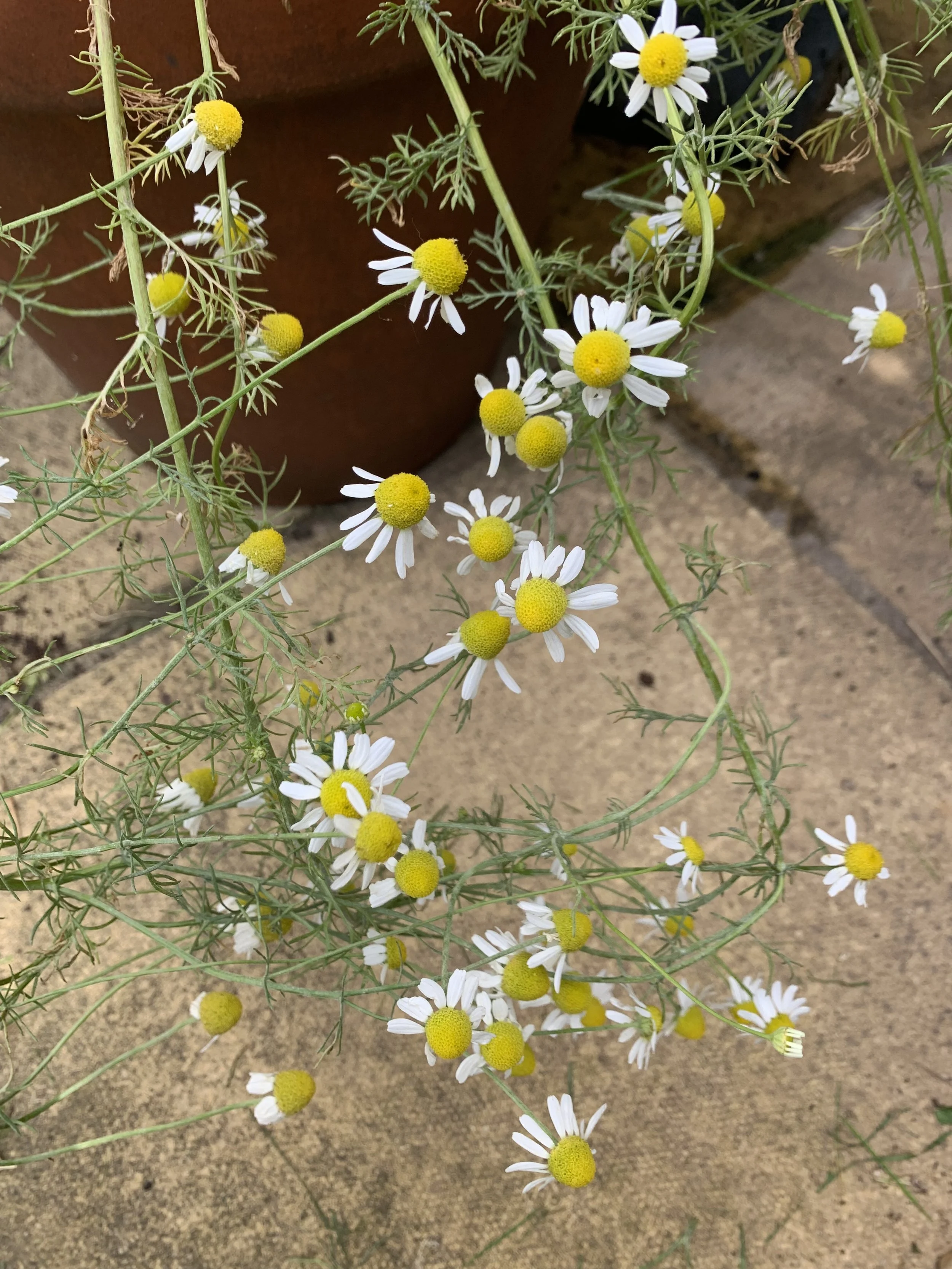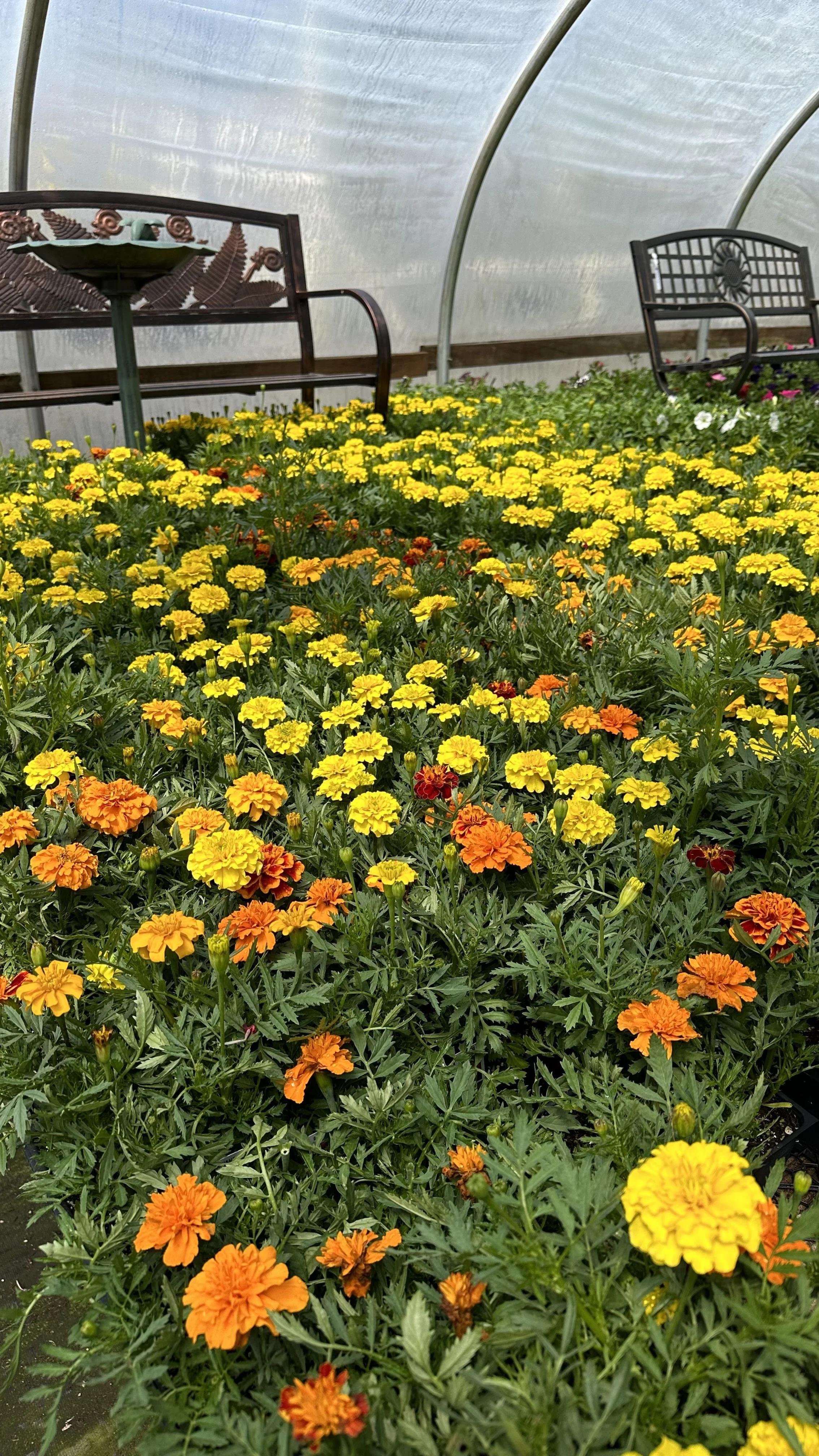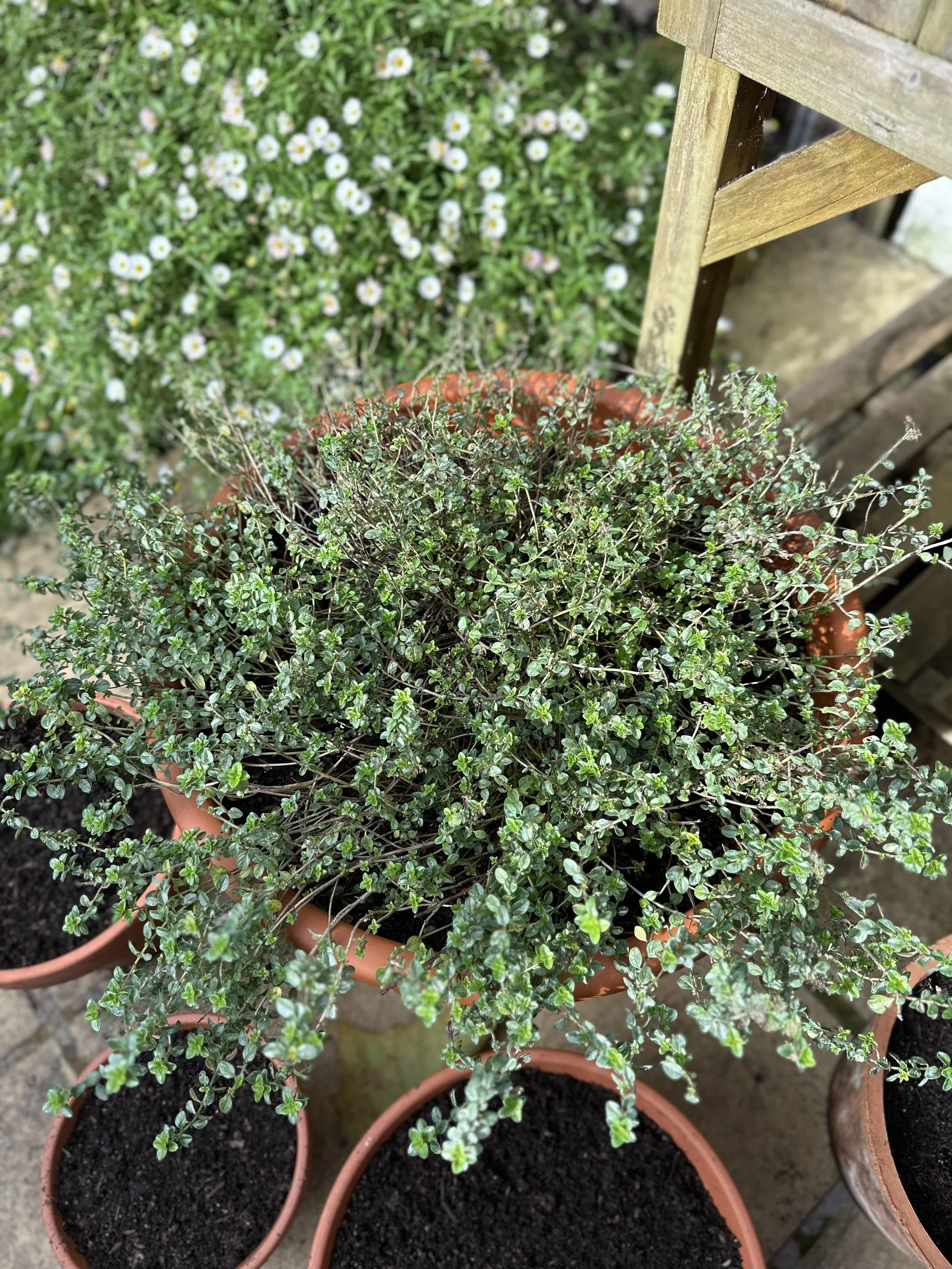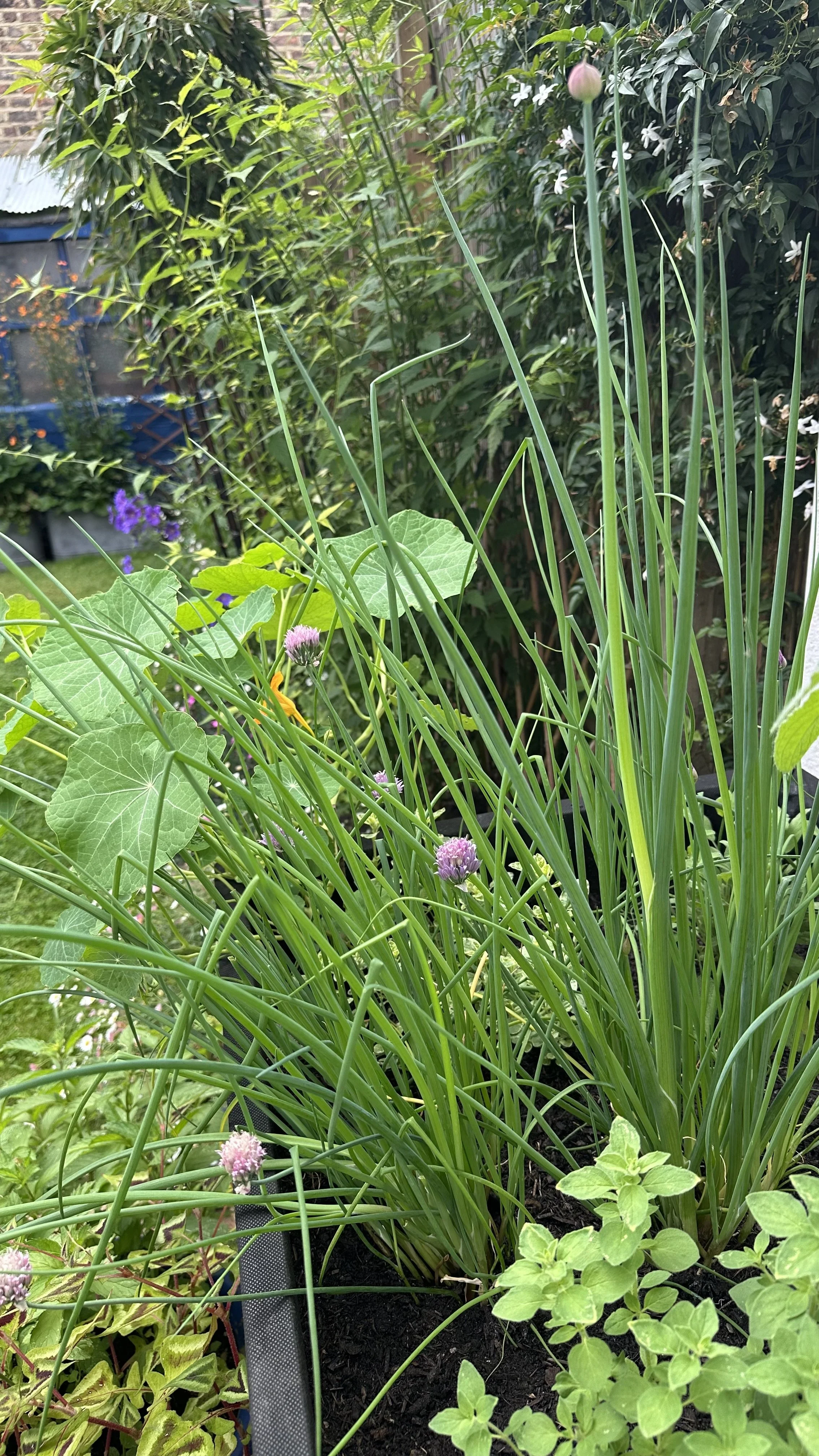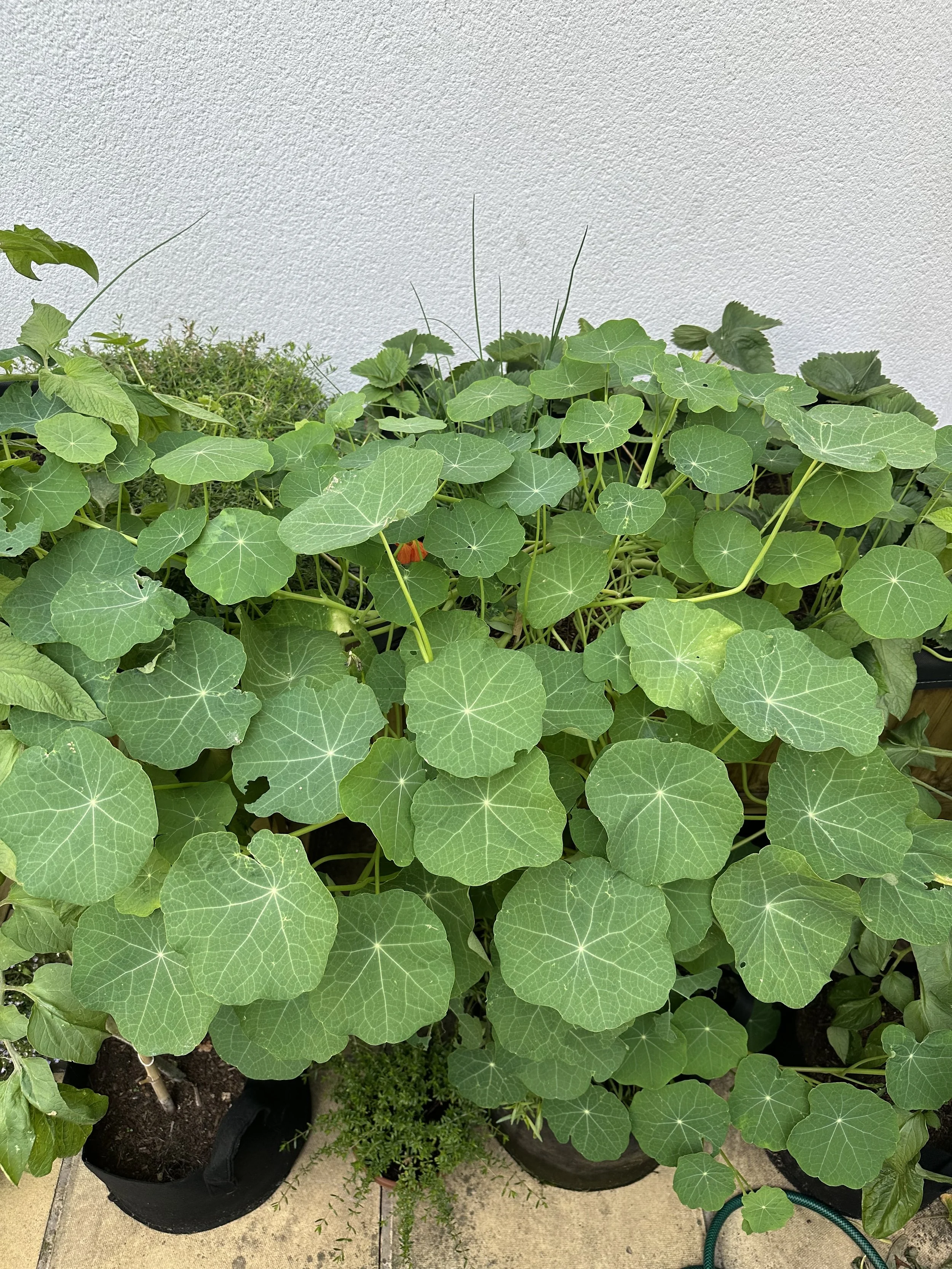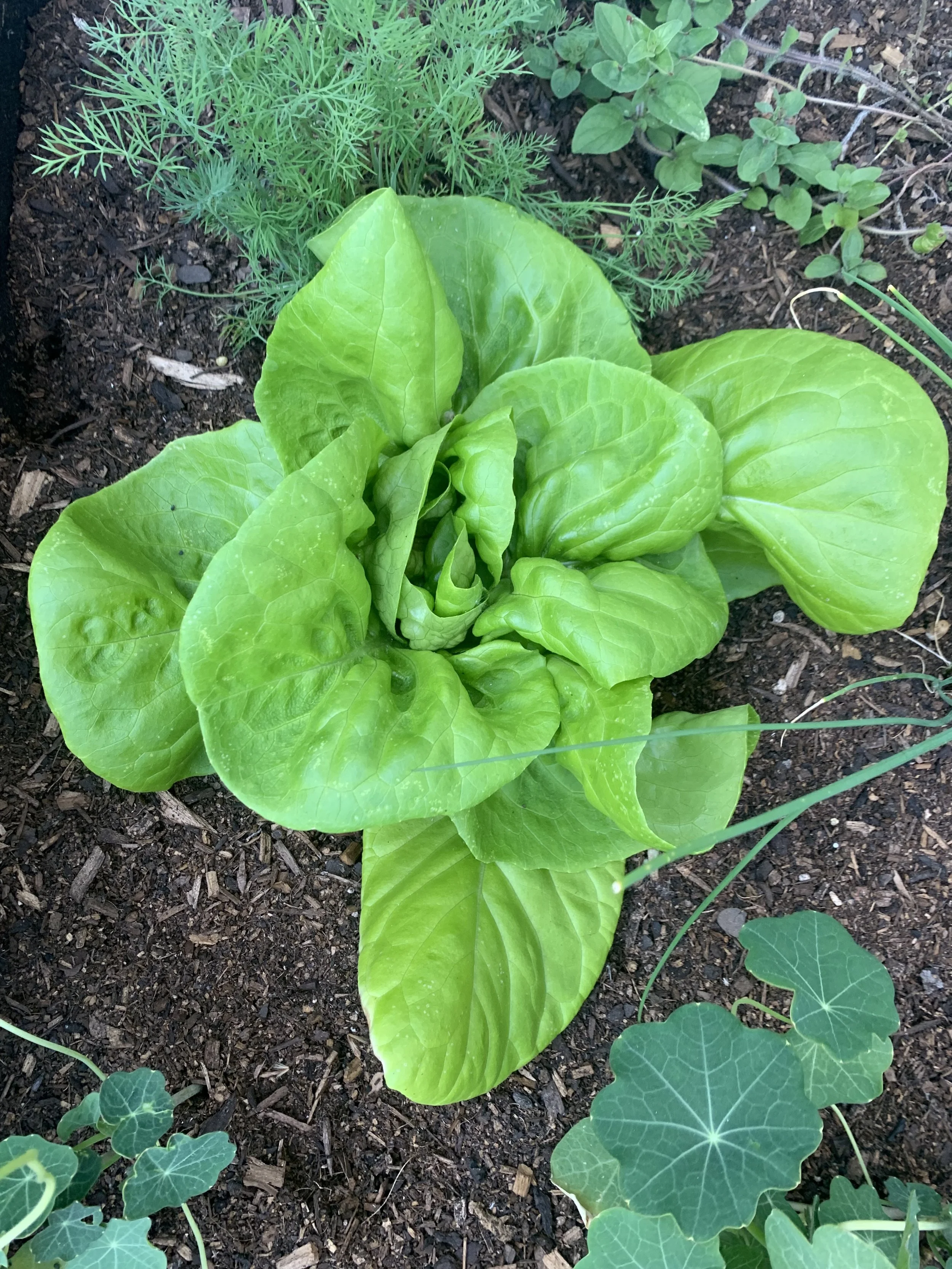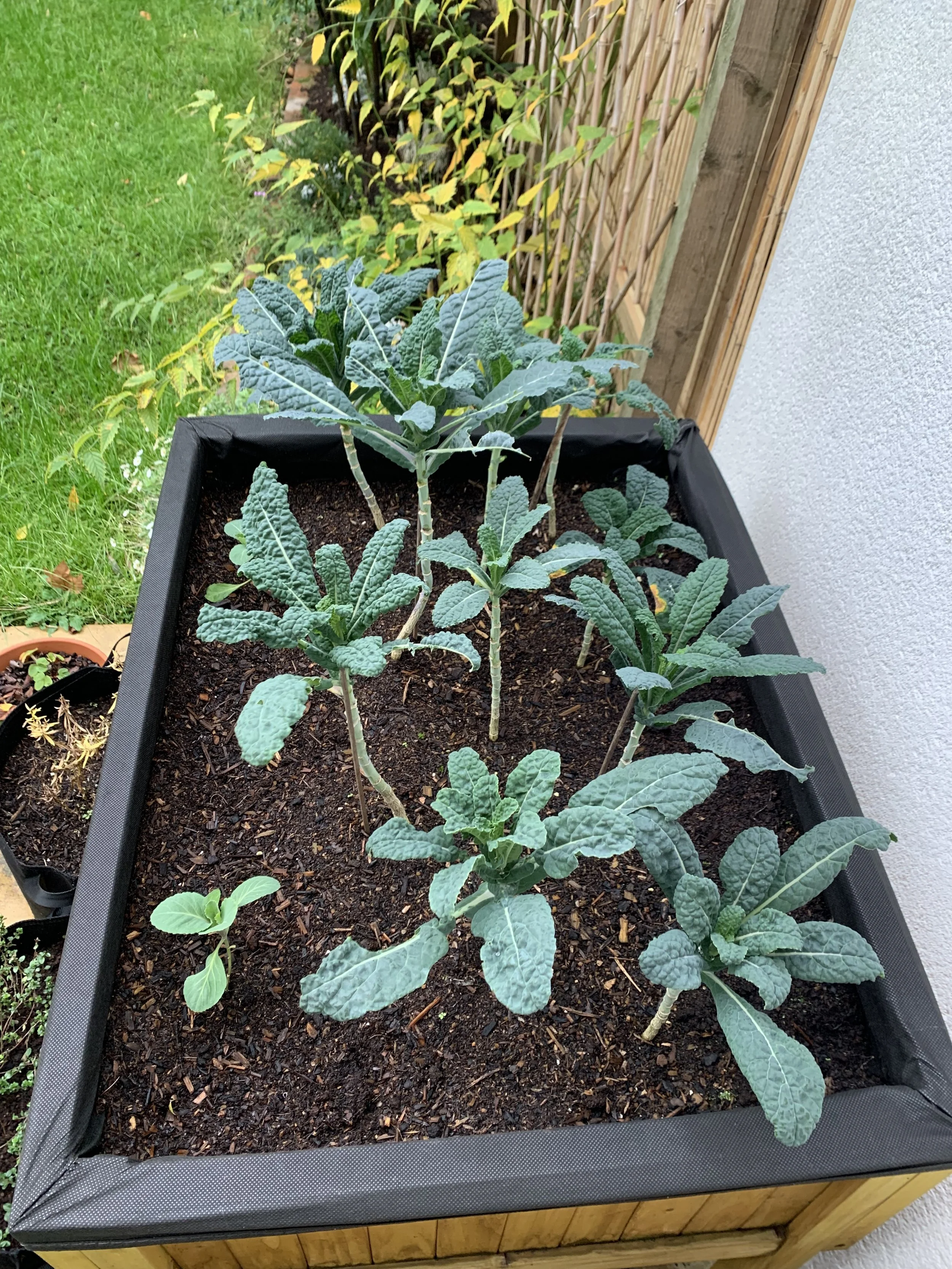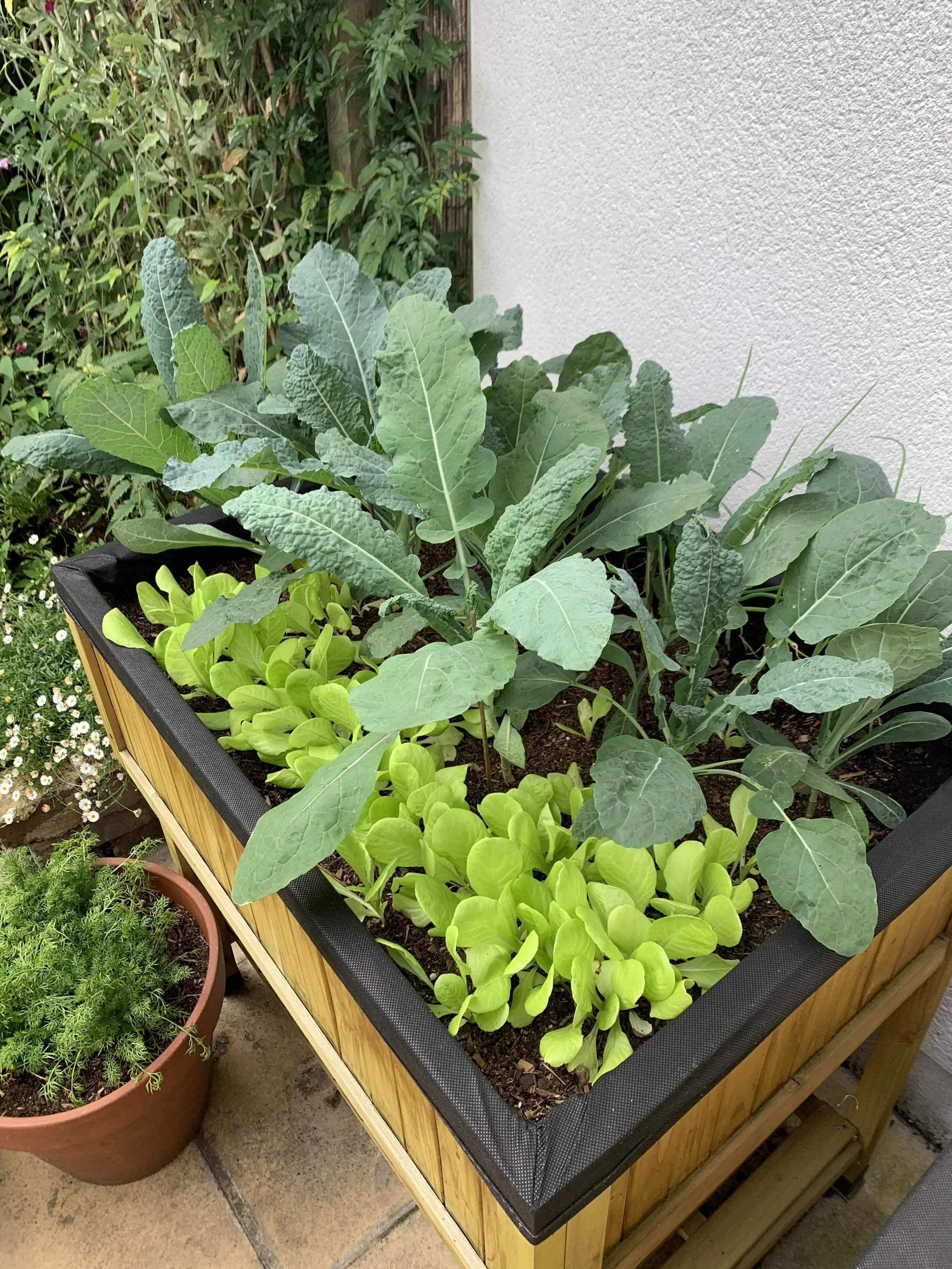Companion Plants for Kale: A Guide to Greener Gardens
This website is reader-supported - thank you! This post may contain affiliate links. As an Amazon Associate, I earn from qualifying purchases at no extra cost to you.
Companion planting is a method of gardening that pairs plants for mutual benefits.
It’s a concept as old as agriculture itself, designed to enhance growth, deter pests, and ensure a bountiful harvest.
When it comes to robust leafy greens like kale, choosing the right kale companion plants can make all the difference.
In this guide, we delve into the best and worst companions for kale and the reasoning behind these gardening strategies.
To learn more about growing kale, check out my guide When to Harvest Kale.
Best Companion Plants for Kale
When it comes to nurturing kale plants in the garden, the companions you choose are not just neighbors; they're allies against common adversaries and partners in growth.
Each of these companions brings unique advantages to the garden, and when strategically planted with kale, they can help create a healthier, more productive, and more balanced ecosystem.
Here’s a more detailed look at some of the top companions for kale and the reasons they are so beneficial:
Chamomile
Chamomile is an advantageous companion for kale for several reasons.
Its strong, pleasant aroma can help deter common pests that plague kale, such as aphids and flea beetles.
Moreover, chamomile can attract beneficial predators like hoverflies and parasitic wasps, which prey on various garden pests.
Additionally, chamomile is reputed to improve the flavor of nearby plants and bolster their growth, making it a favorable neighbor for kale in the garden.
Here are the chamomile seeds I recommend growing:
Learn more about starting a vegetable garden with my guide: What is a Kitchen Garden?
Cilantro
Cilantro is more than just a flavorful herb for your salsa—it’s a magnet for beneficial insects like hoverflies, ladybugs, and lacewings.
These insects prey on aphids and other pests that can be a nuisance to kale.
Planting cilantro nearby can help maintain the ecological balance in your garden.
Learn more about growing cilantro with my guide: The Easiest Ways to Keep Cilantro from Bolting.
Here are the cilantro seeds I recommend:
Brassica Companions
Kale is part of the brassica family, which includes broccoli, cabbage, and cauliflower.
These plants share similar nutritional needs and can be grown together to optimize space.
However, it’s important to be aware that they can attract the same types of pests.
To mitigate this risk, intersperse these with other non-brassica plants that can act as a barrier or distraction to pests.
Here are the broccoli seeds I recommend:
Here are the cabbage seeds I recommend:
Here are the cauliflower seeds I recommend:
Dill and Thyme
Dill attracts wasps and other predatory insects that prey on caterpillars and aphids, while thyme is said to repel cabbage worms, a common kale pest.
Dill and thyme act as both a culinary bonus for gardeners and a biological control against pests.
Here are the dill and thyme seeds I recommend:
Nasturtiums
Nasturtiums serve a dual purpose.
They can act as a trap crop for aphids, drawing them away from your kale.
Moreover, their bright blooms attract beneficial insects that prey on various pests.
Here are the nasturtium seeds I recommend:
Lettuce and Spinach
Fast-growing leafy greens like lettuce and spinach can be great companions for kale.
They provide ground cover to help maintain soil moisture, prevent weeds, and can be harvested on a rotating basis to ensure that the soil remains rich and undisturbed.
Here are the lettuce and spinach seeds I recommend:
Want to learn more about companion planting? Check out my guides:
Benefits of Companion Planting with Kale
The practice of companion planting offers a symphony of benefits that can resonate through your kale plants and the entire garden.
Here's a closer look at the advantages:
Enhanced Biological Pest Control
Companion planting transforms your garden into a haven for beneficial insects that act as natural pest control agents.
By intermingling kale with plants like nasturtiums and herbs such as cilantro and dill, you invite an army of predatory insects such as lacewings, ladybugs, and parasitic wasps.
These beneficial insects prey on common kale pests like aphids, flea beetles, and cabbage loopers, reducing the need for chemical pesticides.
Improved Pollination
The inclusion of flowering companions can improve pollination for all plants in your garden.
Flowers attract bees, butterflies, and other pollinators which are vital for the production of seeds and the fruiting of many plants.
While kale is not dependent on pollination for leaf production, the overall health of the garden ecosystem benefits from increased pollinator activity.
Soil Health and Nutrient Balance
Companion plants can contribute to the health of the soil.
Deep-rooted plants, for example, can help to break up heavy soils, which improves the soil structure and aids in water penetration.
Legumes can fix nitrogen in the soil, providing a natural nutrient boost.
Companion plants can also act as living mulch, covering the soil to retain moisture, regulate temperature, and prevent the growth of weeds.
Spatial Efficiency
Companion planting allows gardeners to maximize their use of space.
Short-season crops or fast-growing plants can be sown between longer-growing ones like kale.
For example, lettuce can be harvested before kale plants grow large enough to shade their space.
This ensures a continual harvest and optimal use of garden real estate.
Disease Prevention
Diversity is a key component in preventing the spread of plant diseases.
Monocultures (growing a single type of plant over a large area) can facilitate the rapid spread of disease.
By mixing kale with a variety of companions, you can interrupt the habitat that pathogens and pests need to thrive, thereby reducing the risk of diseases.
Natural Scent Masking
The aromatic compounds found in many companion plants can help mask the scent of kale, making it harder for pests to locate their target.
Strong-smelling plants like onions, garlic, and marigolds can confuse pests with their overpowering odors, providing a scent barrier that protects kale.
Companion Planting as a Learning Tool
For gardeners, companion planting is an ongoing lesson in ecology.
Observing the interactions between kale and its companions can provide insights into the complex relationships of plant communities, beneficial insects, and the natural balance required for sustainable gardening practices.
Through these benefits, companion planting with kale not only bolsters the kale itself but also contributes to the overall health and productivity of the garden.
It's a holistic approach that aligns with the rhythms of nature to create a thriving, vibrant growing space.
For more companion planting tips, check out my guide:
What Not to Plant With Kale
While companion planting often focuses on the positive interactions between plants, it’s equally important to be aware of antagonistic relationships.
Certain plants can have a detrimental effect on kale, either by attracting pests, competing for resources, or through allelopathy (where one plant inhibits the growth of another due to the chemicals it releases).
Here are some plants to avoid placing next to kale:
Strawberries
Strawberries and kale may both be garden favorites, but they don’t play well together.
Strawberries are prone to attracting slugs, which also have a taste for the tender leaves of kale.
Additionally, strawberries have a sprawling habit and can invade the space needed for kale to flourish.
Tomatoes
Tomatoes can create a challenging environment for kale for a couple of reasons.
They are heavy feeders and can deplete the soil of nutrients that kale needs.
Moreover, they can grow quite large, shading out the kale and hindering its growth. Tomato plants can also spread diseases like blight which can be disastrous for kale.
Beans and Peas
While beans and peas are beneficial to many plants because they fix nitrogen in the soil, they can also create shade that might impede kale’s growth.
Their climbing nature and potential to overshadow kale can be a disadvantage in a tightly planted space.
Check out my guide: The Ultimate Guide to Growing Peas in Pots.
Potatoes
Potatoes and kale are not the best of neighbors.
Potatoes can spread blight and other diseases that can also affect kale.
Moreover, as root crops, potatoes disturb the soil when harvested, which can be harmful to the shallow roots of kale.
To learn more about growing potatoes, check out my guide The Best Potatoes to Grow in Bags.
Sunflowers and Pole Beans
Tall plants like sunflowers and pole beans can cast too much shade over kale, which needs plenty of sunlight to thrive.
Sunflowers and pole beans can also be a physical barrier to the proper air circulation around kale plants, increasing the humidity and potential for fungal diseases.
Companion Planting Tips for Specific Regions
Cool and Temperate Climates
In regions with cooler climates, such as the Northern United States, Canada, and Northern Europe, kale thrives in the spring and fall.
These climates are ideal for growing companions that can withstand a little chill, such as:
Aromatic herbs (like dill and thyme) that can grow in cooler temperatures and help repel pests that are active during these seasons.
Root vegetables (such as beets and radishes) which can benefit from the same cool growing conditions and help break up the soil for kale’s shallow roots.
Peas can be a good early companion for kale, as they can fix nitrogen in the soil before they die back in the heat of summer, but should not overshadow the kale.
Warm and Mediterranean Climates
In warmer regions like the Southern United States, Australia, and the Mediterranean, kale may need some shade from the intense sun, so companion planting can be adjusted accordingly:
Taller plants like corn can provide some shade to kale during the hottest part of the day without competing too aggressively for nutrients.
Marigolds and nasturtiums can help deter pests and can handle the heat as well, making them ideal companions for kale in these regions.
Tropical and Subtropical Climates
In tropical and subtropical climates, the key challenges for kale include heat, humidity, and a different set of pests:
Leafy greens that are heat tolerant (such as New Zealand spinach) can be planted as ground cover to keep the soil cool and moist for kale.
Perennial herbs that can withstand the heat, such as lemongrass, may help repel pests with their strong scents and have the robustness to survive in a tropical garden setting.
Arid and Desert Climates
In desert regions, where water conservation is crucial, companion planting with kale should focus on efficient water use:
Succulents and other drought-tolerant plants can share space with kale to fill in gaps without increasing water demands.
Mulch-producing plants can be used to help retain soil moisture and provide shade. These can include squash plants, whose large leaves can shield the soil.
High Altitude and Mountain Regions
At high altitudes, the growing season can be short, and temperature swings between day and night can be extreme:
How to Plant Kale in Raised Beds
By following these steps, your raised bed can become a productive and efficient space for growing healthy, vibrant kale.
Raised beds offer the flexibility to manage the micro-environment for your kale plants more closely, leading to potentially better yields and less back strain for the gardener.
Select the Right Location
Kale prefers a spot that receives full sun to partial shade.
In raised beds, you have the advantage of positioning your bed in the optimal location such as a south facing or west facing direction.
However, if you live in a hotter climate, a location that gets afternoon shade can help protect the kale from intense heat.
Prepare Your Raised Bed
Ensure your raised bed is filled with high-quality soil that is rich in organic matter.
The soil should be loose, well-draining, and have a slightly acidic to neutral pH.
Before planting, you can amend the soil with compost to add nutrients and improve soil structure.
Here is the organic soil I recommend using:
Space Kale Properly
Kale plants need room to grow, so space them about 12 to 18 inches apart to ensure they have enough room to reach their full size.
The rows in your raised bed should be spaced about 18 to 24 inches apart.
This allows for airflow between plants, reducing the risk of fungal diseases.
Mulching
After planting, apply a layer of organic mulch around the kale plants.
Mulch helps to retain soil moisture, regulate soil temperature, and suppress weeds.
Straw, shredded leaves, or grass clippings can make excellent mulch for kale in raised beds.
Here is the organic mulch I recommend using:
Watering Kale
Kale needs consistent moisture to thrive, especially when grown in raised beds, which can dry out faster than in-ground gardens.
Water your kale deeply and consistently, aiming for at least an inch of water per week, including rainfall.
Avoid overhead watering to reduce the risk of leaf diseases.
Take advantage of rainwater collected in a water butt for watering your kale.
Feeding Kale
Kale is a heavy feeder, so providing it with regular nutrients is essential.
An all-purpose vegetable garden fertilizer can be applied according to the package instructions.
Alternatively, side-dressing the plants with compost or well-rotted manure during the growing season can provide a slow-release source of nutrients.
Here is a great fertilizer I recommend:
Succession Planting
To extend your harvest, consider succession planting.
Sow new kale seeds every 2 to 4 weeks for a continuous supply.
Raised beds warm up faster in the spring, which can give you a head start on the growing season.
Learn more with my guide: What is Succession Planting? Grow More in Less Space.
Here are the kale seeds I love:
End-of-Season Care
As the season winds down, remove any spent kale plants to prevent the overwintering of pests and diseases.
You can then plant a cover crop in your raised bed to protect and enrich the soil over the winter months.
In conclusion, the practice of kale companion planting is not only a method to enhance your garden's beauty but also a strategic way to boost its overall health and productivity.
By selecting the right neighbors for your kale, you can create a thriving ecosystem that supports fast-growing, robust plants.
Remember to consider what to plant alongside your kale carefully and equally important, what to avoid planting near it to prevent competition and the spread of pests or diseases.
Planting kale with the right companions is a wise move for any gardener looking to make the most out of their vegetable plot.
With these tips in hand, your kale and its companions are set to flourish, bringing you a bountiful and delightful harvest.
